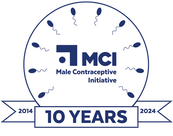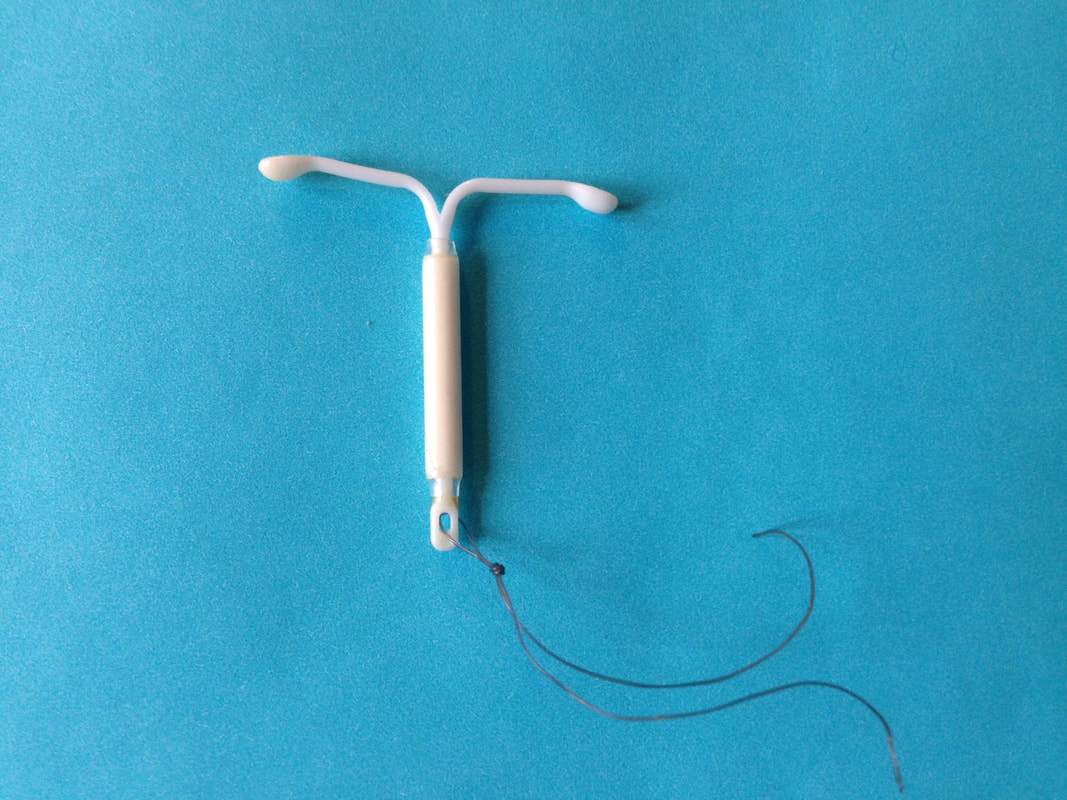|
(Image courtesy of Sarahmirk, CC BY-SA 4.0 <https://creativecommons.org/licenses/by-sa/4.0>, via Wikimedia Commons) An Intrauterine Device, or IUD is a long-term contraceptive option placed within the uterus through the vagina by a healthcare provider to prevent pregnancy. It is a T-shaped, plastic device with one or two strings hanging from it that reach through the cervix into the vagina. There are two types of IUDs, which function in different ways:
Both types of IUDs are over 99% effective, which means that users don’t have to worry about a pregnancy occurring. Additionally, since it is a long-term method that is inserted and removed by a healthcare provider, there is no user error to impact the effectiveness of the method. Most healthcare providers recommend that users check to feel that the strings are in place, but there is no other action for the user. Users may experience side effects, such as bleeding changes or changes in cramping with either type of IUD, or hormonal IUD users may experience acne, weight gain, or mood changes with the method. Overall, IUDs serve as a very effective birth control method that works for many people seeking to prevent pregnancy. You may be wondering what this has to do with male contraception. Well, although IUDs may serve as an effective contraceptive method for many people, some people may need something different for their pregnancy prevention. Reproductive autonomy tells us that they deserve to find something that works best for their life and their goals. Which is why we are working to ensure that the research and development of non-hormonal, reversible contraception for sperm producers is progressing. Nuts & Bolts: Intrauterine Devices (IUDs) Key Terms: Cervix - the narrow passage forming the lower end of the uterus. Fertility - the ability to conceive children or young. Progestin - a natural or synthetic steroid hormone, such as progesterone, that maintains pregnancy and prevents further ovulation during pregnancy. Uterus - the hollow, pear-shaped organ in a woman's pelvis. The uterus is where a fetus (unborn baby) develops and grows. Also called womb. For additional terminology related to male contraception and the male reproductive system, please visit our glossary: Sources/References: Callahan, Tamara; Caughey, Aaron B. (2013). Blueprints Obstetrics and Gynecology. Lippincott Williams & Wilkins. p. 320. ISBN 9781451117028. "IUD (intrauterine device)". Contraception guide. NHS Choices. Retrieved 2 March 2014. Winner, B; Peipert, JF; Zhao, Q; Buckel, C; Madden, T; Allsworth, JE; Secura, GM. (2012). "Effectiveness of Long-Acting Reversible Contraception". New England Journal of Medicine. 366 (21): 1998–2007. doi:10.1056/NEJMoa1110855. PMID 22621627. S2CID 16812353 Grimes, D.A. (2007). Hatcher, R.A.; Nelson, T.J.; Guest, F.; Kowal, D. (eds.). "Intrauterine Devices (IUDs)". Contraceptive Technology (19th ed.). Shoupe, Donna (2011). Contraception. John Wiley & Sons. p. 96. ISBN 9781444342635. For additional publications related to male contraception and the male reproductive system, please visit our publications page:
0 Comments
Your comment will be posted after it is approved.
Leave a Reply. |
Categories
All
Archives
June 2024
|
|
|
Donate to Male Contraceptive InitiativeYour generous donation makes a difference!
|
© Male Contraceptive Initiative. All rights reserved.


 RSS Feed
RSS Feed
